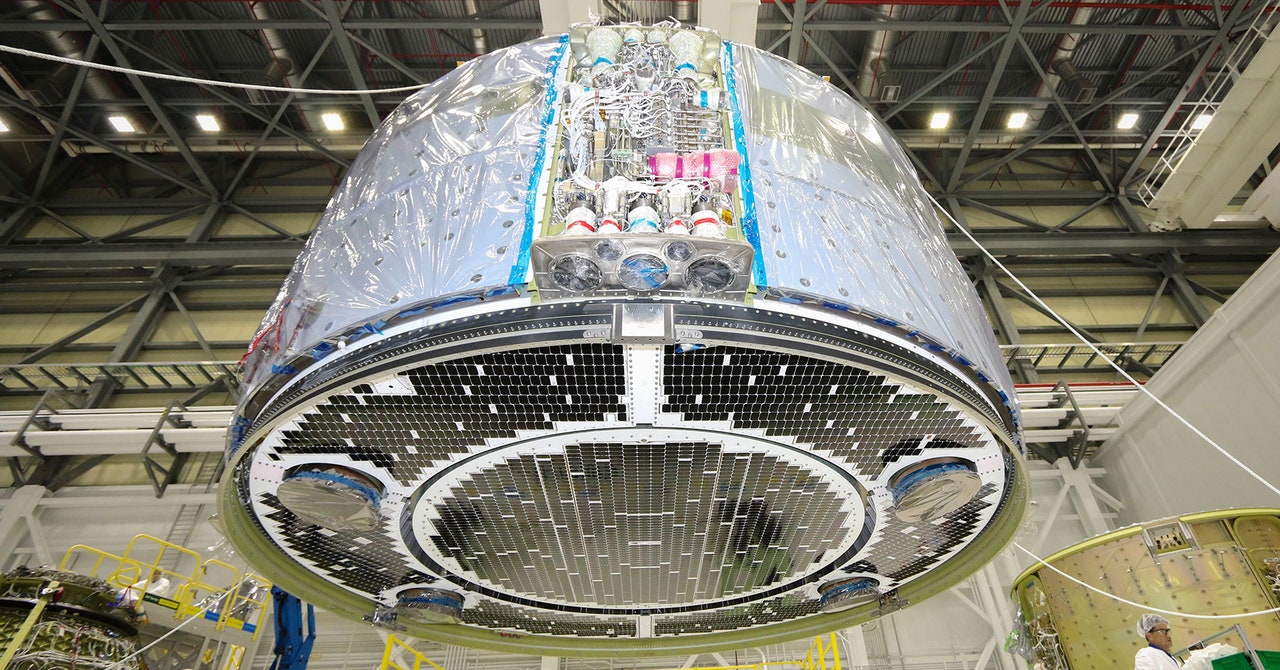
The first passenger to fly aboard Boeing’s Starliner will be Rosie the Rocketeer, a mannequin set to blast off to the International Space Station aboard the capsule on Thursday evening. If she makes the trip safely, NASA astronauts will be cleared for future flights on the new spacecraft.
A successful uncrewed demonstration will make Boeing the second private company allowed to ferry NASA crews to the ISS and will make Starliner a full-fledged competitor to SpaceX’s Dragon crew capsule. “We’re excited to fly. Starliner’s a great vehicle. Really, the only way to get the final piece of data you need to fly crew is to go fly in the environment and dock to the ISS,” said Steve Stich, manager of NASA’s commercial crew program, at a press conference earlier this month.
Boeing’s Starliner is scheduled to launch at 6:54 pm Eastern time atop a United Launch Alliance Atlas V rocket from Cape Canaveral in Florida. In addition to Rosie, it will be bringing up more than 400 pounds of food, clothes, and sleeping bags. So far, the weather looks good, with forecasters estimating a 70 percent chance that conditions will be go for launch. (If it is delayed until Friday, chances drop to 40 percent.) If all goes as planned on Thursday, the capsule will dock with the space station’s Harmony module at about 7:10 pm Eastern time on Friday. The launch and docking can be viewed live on NASA TV.
When the space shuttle program ended in 2011, NASA astronauts lost their regular ride to the ISS. Instead, they launched on Russian Soyuz spacecraft while NASA’s commercial crew program collaborated with private business partners to develop a new generation of spacecraft for transporting astronauts and cargo. In May 2020, two NASA shuttle veterans became the first to ride SpaceX’s Dragon capsule to the ISS and—two months later—to return safely home. Since then, SpaceX has regularly carried astronauts to the station. Northrop Grumman and Sierra Space also have contracts with NASA for uncrewed cargo resupply missions. Earlier this year, the company Axiom became the first to send an all-private group of space tourists to the ISS.
Boeing’s new launch, called the Orbital Flight Test-2 (OFT-2), isn’t its first attempt at an uncrewed demonstration of Starliner. The OFT-1 mission in December 2019 literally fell short, when software glitches caused the capsule to burn through propellant after launch. It went into orbit about 155 miles off the ground, but it never reached the ISS, which orbits much higher up. Boeing addressed that issue and planned another try last August, but during prelaunch preparations engineers discovered problems with the oxidizer valves in Starliner’s propulsion system. The launch was scrubbed. Now those problems have been fixed, and there are no outstanding issues, said Mark Nappi, program manager of Boeing’s Commercial Crew Program, following Starliner’s successful launch-readiness review on Tuesday.
If all goes well with this week’s test mission, Boeing’s first crewed flight, carrying two or three NASA astronauts, could take off later this year. “We want to make sure this is a vehicle we can fly on the next time,” said Kathryn Lueders, associate administrator of NASA’s Space Operations Mission Directorate, at the agency’s media briefing on Wednesday. “We need to make sure there isn’t anything we need to update or fix on this spacecraft.”
That will include checking that Rosie the dummy astronaut made it back in one piece and conducting other tests to make sure real people can fly aboard the spacecraft. “Rosie doesn’t breathe, but we want the spacecraft to get back so we can start testing the environmental control system,” NASA astronaut Suni Williams said at the same event on Wednesday.


